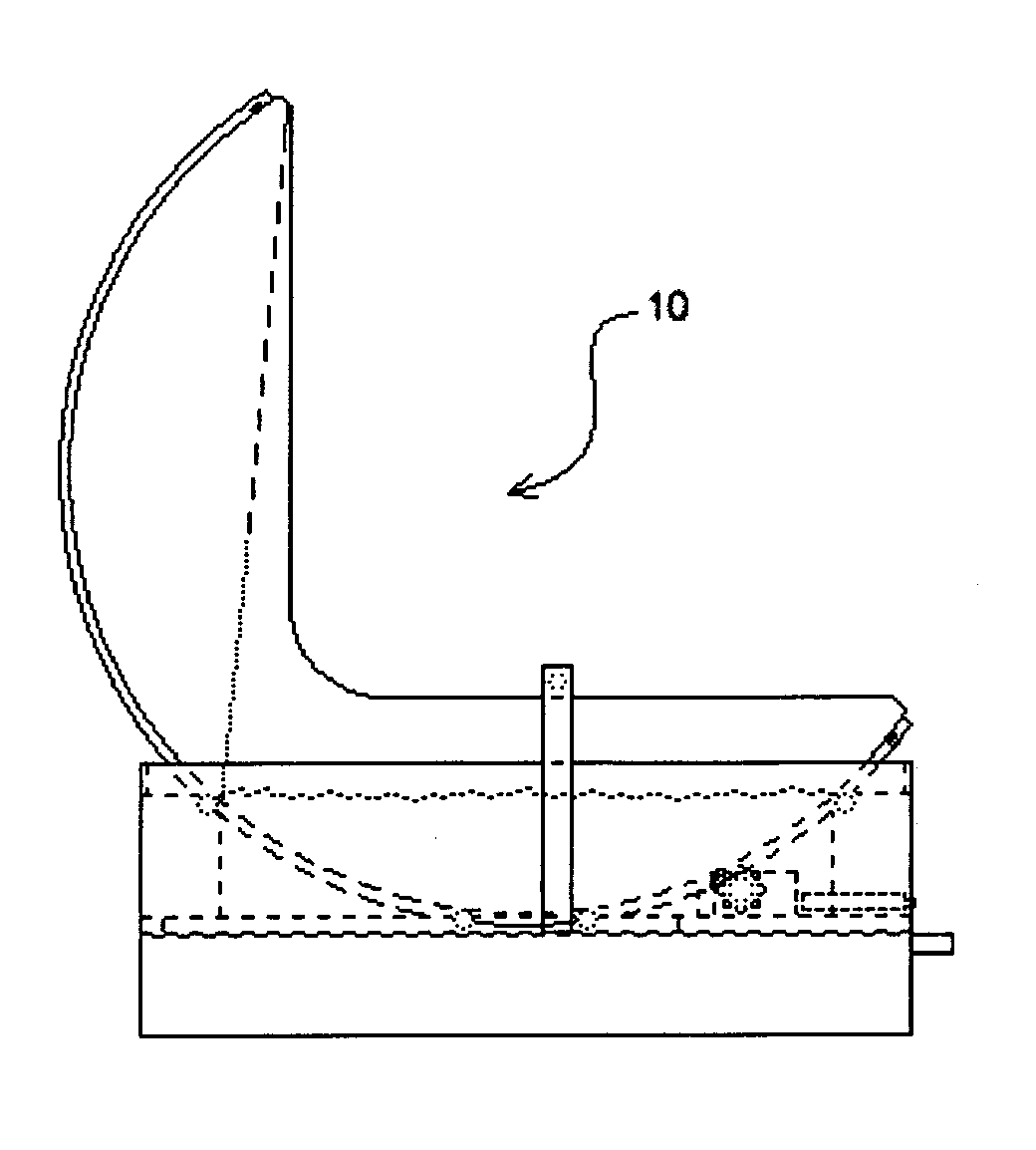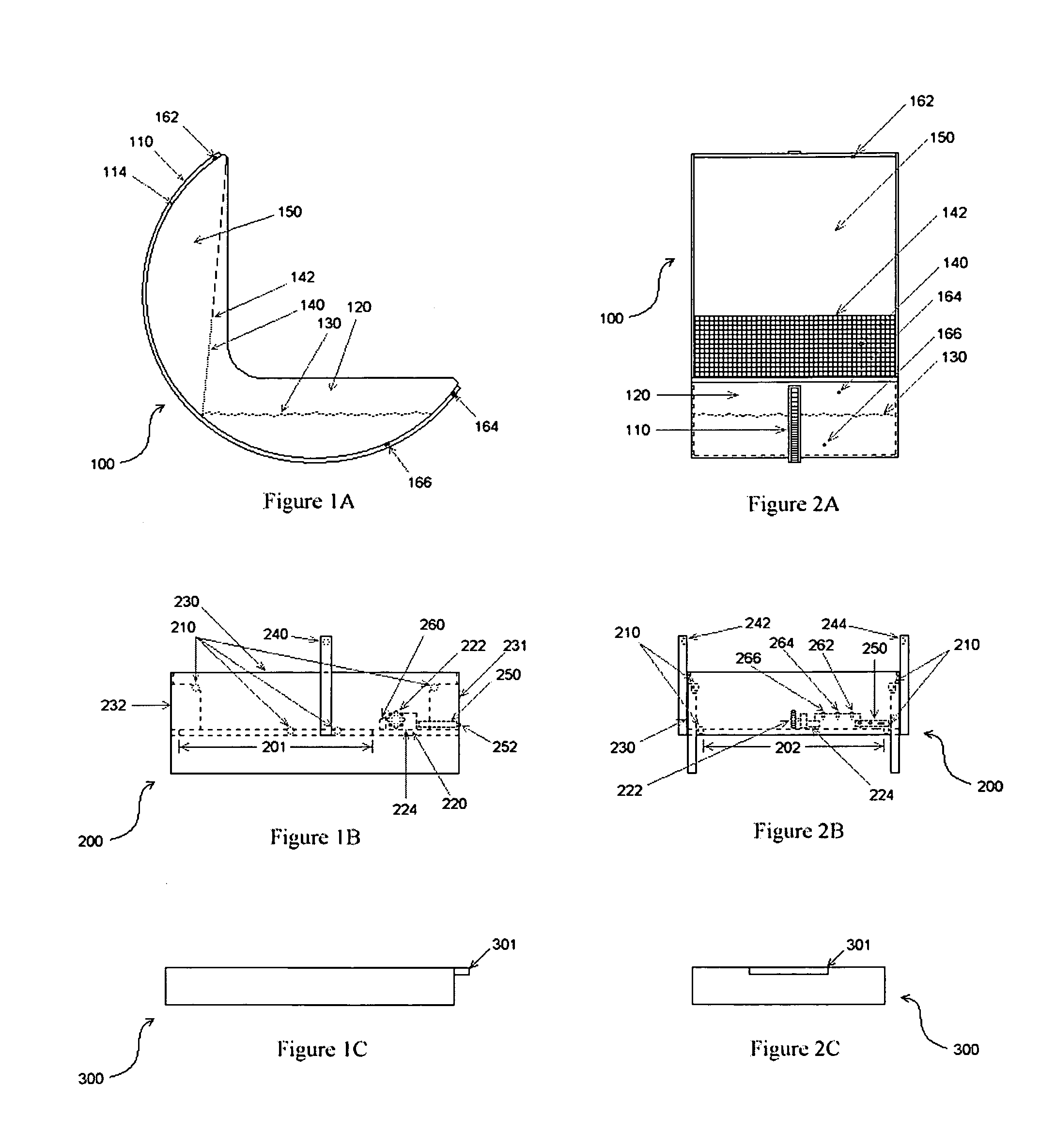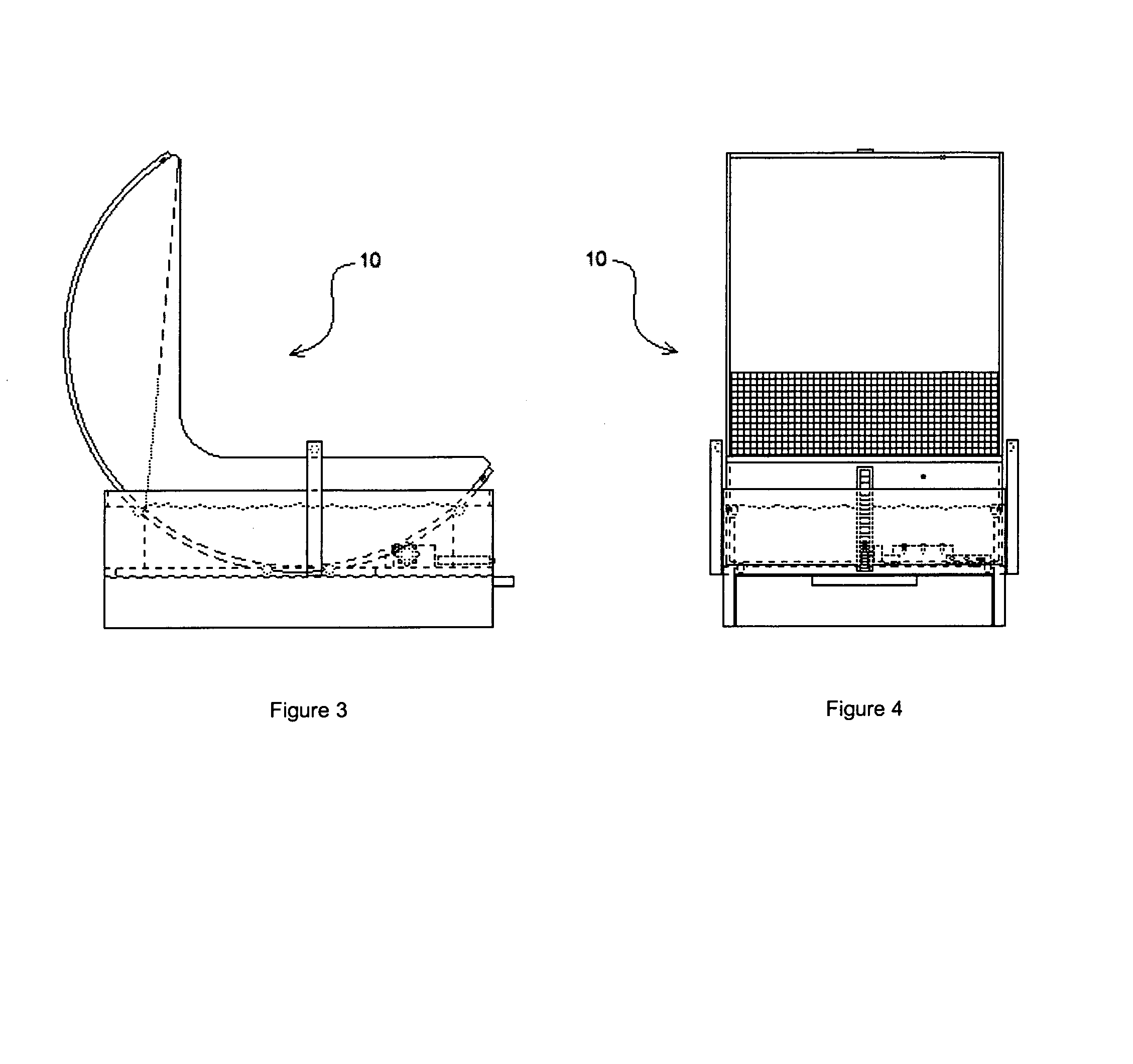Apparatus for a litter box
a technology of apparatus and litter box, which is applied in the field of apparatus for removing animal waste materials from litter, can solve the problems of difficult to force waste clumps through such dense and heavy materials as clay litter, difficult process, and inability to drive, so as to reduce or eliminate odor, reduce the frequency required, and prevent substantial odor from escaping the device
- Summary
- Abstract
- Description
- Claims
- Application Information
AI Technical Summary
Benefits of technology
Problems solved by technology
Method used
Image
Examples
Embodiment Construction
[0081]With reference to FIGS. 1-4, an embodiment of the instant invention 10 includes a First Unit Assembly 100, a Second Unit Assembly 200 and a Waste Receptacle 300. The Second Unit Assembly 200 provides a base that rests on a floor, counter, or other flat surface that is accessible by one or more pets, such as a cat or cats. The First Unit Assembly 100 rests on rollers 210 and a sprocket 222 of the Second Unit Assembly 200, and is prevented from moving laterally by a track 110 on a common outer surface 114 of the First Unit Assembly 100 and sidewalls 230 of Second Unit Assembly 200. A home position for the First Unit Assembly 100 is a position such that the top of the side walls 122 of the unenclosed litter compartment 120 are approximately parallel to the top of the sidewalls 230 of the Second Unit Assembly 200 and such that when litter 130 is placed in the unenclosed litter compartment 120, the litter 130 will rest at level state, as depicted in FIG. 3. When the First Unit Asse...
PUM
 Login to View More
Login to View More Abstract
Description
Claims
Application Information
 Login to View More
Login to View More - R&D
- Intellectual Property
- Life Sciences
- Materials
- Tech Scout
- Unparalleled Data Quality
- Higher Quality Content
- 60% Fewer Hallucinations
Browse by: Latest US Patents, China's latest patents, Technical Efficacy Thesaurus, Application Domain, Technology Topic, Popular Technical Reports.
© 2025 PatSnap. All rights reserved.Legal|Privacy policy|Modern Slavery Act Transparency Statement|Sitemap|About US| Contact US: help@patsnap.com



